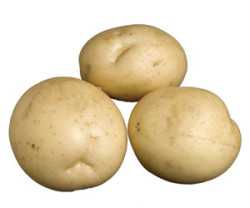Potatoes: New Releases

From east to west, new potato varieties are hitting the marketplace. In the East, Cornell University has released two for the chipping industry: Waneta and Lamoka. In the West, Sage Russet and AmaRosa are now available.
North And South
Waneta and Lamoka, from the Cornell breeding lines, are named after two bodies of water. “These two varieties were discussed in our program for years and they were always discussed together,” explains Walter De Jong, associate professor in the Plant Breeding and Genetics Department at Cornell University. “In fact, the first cross was made in 1998. As a result, the potatoes are named after twin lakes in Upstate New York.”
Waneta, he says, boasts a nice shape and can also be grown for the table market. “Both are comparable to or better than Snowden, which is known as the chipping industry standard, and both have good resistance to common scab.” The two varieties also are resistant to golden cyst nematode, De Jong adds.
Lamoka is a variety that can be grown in the north but is best suited for production in the south, thanks to its high starch content, which is said to be a good characteristic for the chipping industry. Waneta, on the other hand, is better for Northern regions. “Its gravity is less and there is a correlation with gravity and black spot bruising,” explains De Jong. “So it is an ideal candidate for stony fields in the north.”
Western Spuds
At Oregon State University, a variety for the fresh market and one for the fresh and processing market have recently been released.
AmaRosa, a red fingerling that is chock-full of antioxidants, is being marketed toward the specialty potato market, says Solomon Yilma, a researcher in the Oregon State University breeding program. The industry is currently building up seed for this variety, which was released in May. (For more information, check out the July 2010 issue of American Vegetable Grower).
The other variety, Sage Russet, which features a flattened, long shape, is said to be ideal for the processing market for French fries. Some of its strengths include high yields and few tuber defects. It is moderately resistant to early blight, scab, early dying, and net necrosis. This variety also can be used for fresh market.










